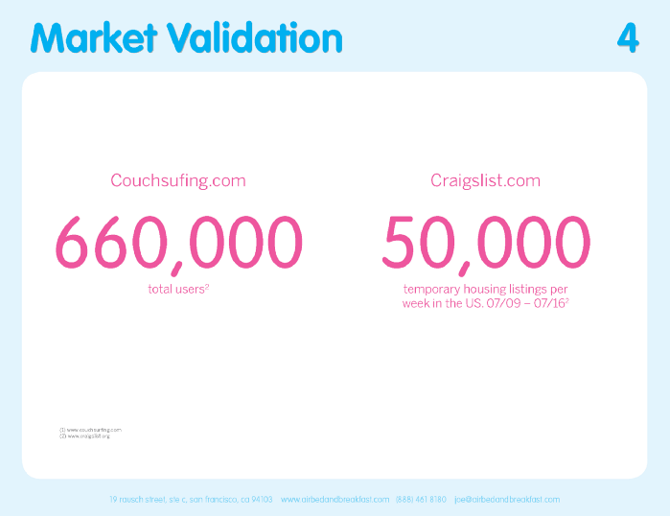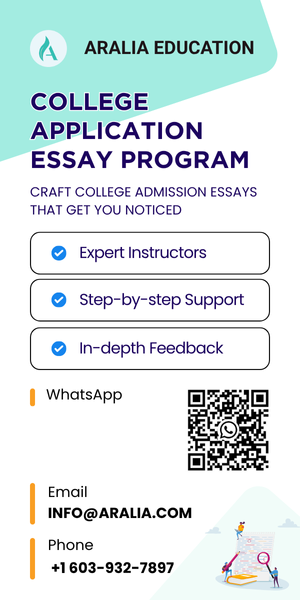A great business pitch is important in creating a good first impression for judges or potential investors, especially when you are competing for a spot with other teams. In this article, we will discuss the main components of a pitch deck. By understanding every component in the pitch deck, you can easily guide the research and product development, or can have a high-level overview of your product.
A Pitch Deck is a short presentation in front of the investors or judges to introduce or ‘pitch’ your products. Students can access the pitch deck template. You can use this template as a foundation for your pitch deck in any high school business competition. Depending on the competition, there will be presentation slide limitations; therefore, remember to check the slide limit beforehand!
To illustrate the pitch deck components better, below are the pitch decks from popular companies, such as Coinbase and Airbnb to give you a better idea of what a professional pitch deck should look like.
Brian Armstrong, the founder of Coinbase – American publicly traded company that operates a cryptocurrency exchange platform, has published an article sharing Coinbase Seed Round Pitch Deck. The company has raised about $216M over the past five years and created a company valued at $1.6B. More information can be found here.
1. Title slide
When it comes to business presentations, you have to think from the beginning to the end, from the moment you start the presentation to when you end. Every slide should serve a purpose within a presentation, and so should the title slide. Within the slide deck, the title slide needs:
- Logo and Brand: The logo and the brand name should be prominent in this slide, and across all slides so that investors/judges can identify your brand with others
- Tagline: Many people underestimate the power of a tagline. However, a good tagline will communicate the brand message clearly and help set your brand apart from competitors. A tagline will even set the tone and approach for the brand if written deliberately.
For example:
- Airbnb – Book rooms with locals, rather than hotels.
- Coinbase: Your hosted bitcoin wallet
2. The problem
Due to the slide count limitation, your presentation should be straight to be point and concise. The problem to describe here is the customer and/or market problem.
Discussing the Airbnb case, the main problems Airbnb found were 1. Customers were price-sensitive while booking travel online. 2. Hotels are normally put in a metropolitan area with a lot of tourists; however, their locations are separate from the city’s culture. 3. During the time of founding, there was a booking gap between locals and tourists. Therefore, Airbnb exists.
Another example is Uber. For the 2008 pitch deck, Uber discussed the market problem, which was the inefficient and aging technology used in traditional cabs. Customers spent so much time hailing a cab by raising their hand or calling on the phone for a cab. The market problem also lies in the high taxes/fees, leading to the high cost to the consumer and low quality of service.
The problem seems relatively straightforward; however, the problem definition resulted from months of market and customer research. With intensive research, you should summarize the problem in 3 or less points in the pitch deck, and only go more in depth if the problems are complicated.
3. Market Opportunity/Market Validation
The following slide discusses the market size and opportunity for your potential solution, which is the beginning of your business plan. You should back up the claims with citations and verified data, in case they are questioned by investors/judges.
Regardless of what data you put here, it should deliver the core message: there is a significant market gap and we are here to fill in that gap. For example, the two numbers that Airbnb provides here show that half a million people are constantly searching for local housing; however, there is no formal platform dedicated to solving this problem.
That’s why Airbnb was created.
For this slide, you should emphasize numbers/statistics showing the target market to catch the audience’s intentions and show that your idea will turn into a viable business. Graphs, charts, and icons can also be used if they help deliver the message. By citing your number in the footer, you express a high level of professionalism and integrity.

4. Solution Overview
5. Revenue Model
This is where you should explain how you will earn money and who will pay for your products and services. You don’t have to show the whole revenue stream in detail, but an overview of your main income. Remember to keep it simple and use big numbers. In this slide, you can also mention your adoption strategy or go-to-market strategy and marketing plan.
6. Team
Use a consistent layout when showcasing your teammates. This team slide should emphasize your team’s background and expertise, and why you are the best fit for this startup. In a way, this slide is similar to a 60-second elevator pitch, where your main purpose is to let the person in front remember who you are and what you do.
7. End Slide
The end slide can include a conclusion or anything you feel that is important to include. Examples can be: main features, taglines, future next steps, financial models, go-to-market, etc. Remember, this slide will be displayed during the Q&A; therefore, you should leave this slide with some impactful information that will attract the judge’s attention.
Now that you understand the essence of these elements in a pitch deck, you will be able to guide your research and product development at the beginning to start down the right path. Every startup story is unique so you can definitely make tweaks and adjustments to this overall guide. Knowing the foundation allows you to have a strong structure and build unique points about it. For high school students who are interested in participating in business competitions, Aralia has just the right class for you!
Further reading:
Aspiring entrepreneurs will create, promote, and market a company to win over the Diamond Challenge Business Competition’s judges. In this intensive format, students will conduct the business ideation process, create a business plan, conduct environmental scanning, establishing the organizational mission, vision, and value statements, create marketing and promotion strategies, write the business proposal and create a pitch deck required by the Diamond Challenge Business Competition.










